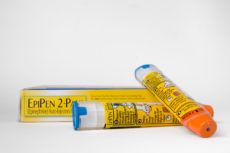EpiPen: A Case Study in Health Insurance Failure
 I recently wrote a post describing EpiPen as a “Case Study in Government Harm,” describing how the government had made it possible for the manufacturer to increase prices of the life-saving drug multiple times without fear of retaliation. It is also a case study in how health insurance distorts our choices and increases their cost. I learned this by following an Internet advertisement for EpiPen down its rabbit hole.
I recently wrote a post describing EpiPen as a “Case Study in Government Harm,” describing how the government had made it possible for the manufacturer to increase prices of the life-saving drug multiple times without fear of retaliation. It is also a case study in how health insurance distorts our choices and increases their cost. I learned this by following an Internet advertisement for EpiPen down its rabbit hole.
The ad induced me to download my “EpiPen Savings Card,” which would ensure I paid nothing for my EpiPens (up to six, according to the ad).
However, I had to answer a skill-testing question first: What was my insurance coverage? As you can see from the screenshot below, when I answered I had no insurance, the EpiPen savings card was figuratively ripped from my hand:

However, when I answered I had private insurance – Hooray! My EpiPen Savings Card was confirmed:

This is an extreme example of a coupon strategy used by some drug makers: Immunize the patient from the direct cost of the medicine so the health insurer has to pay a price much higher than the market can bear. Of course, the insurer might get a discount from the list price, but the uninsured patient will never benefit from that.
Further, the above-market price is paid by patients through high insurance premiums, so nobody is really saving money. In Canada, where EpiPen is sold over-the-counter in drugstores to cash-paying customers, it sells for about $80 (U.S.), instead of over $600 in the United States. Much of that price differential is due to our overreliance on health insurance to pay for medical goods.





